|
cat mummy
|
figure of a cat headed goddess
|
shaven man in front of a cat.
|
hollow bronze head and neck of a cat.
|
Cat in religion
One of the main goddesses connected with the cat was Bastet, depicted in former times with the head of a lion and only from the Third Intermediate Period shown as cat or with a cat head. However, not all deities depicted as cats are Bastet. The sun god Ra was also connected with the cat. In the Book of the Dead chapter 17 Re appears as the 'big tom cat' who kills the snake of evil next to the persea tree in Heliopolis.
In the Late Period many thousands of cats were mummified, sometimes buried in special cat shaped coffins. Cat cemeteries have been found at Bubastis and other places (a list Brussels 1989: 20-22). This custom has led to a widespread assumption that cats (and other animals) were specially worshipped and especially well treated, as supported by references by classical authors: Herodotus (II, 66): ' When a man has killed one of the sacred animals, if he did it with malice prepense, he is punished with death; if unwittingly, he has to pay such a fine as the priests choose to impose' (Translated by George Rawlinson).
Research on the cat mummies showed that many of them were very young kittens or around two years old when mummified. X-ray projects have shown that many of them were strangled to be mummified. Cat (and other animal and bird) mummies must have had the function of votive offerings. They were produced for rituals and buyers at special places to be deposited at temples and other holy locations.
|
cat mummy
|
figure of a cat headed goddess
|
shaven man in front of a cat.
|
hollow bronze head and neck of a cat.
|
Amulets (all Late Period to Ptolemaic Period except UC 62200 and 62207 which date to the Middle Kingdom: UC 62200 is perhaps another animal)
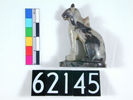 |
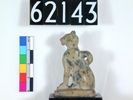 |
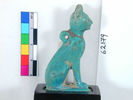 |
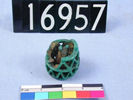 |
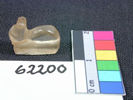 |
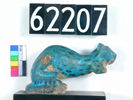 |
Brussels 1989: 20-24
Copyright © 2002 University College London. All rights reserved.